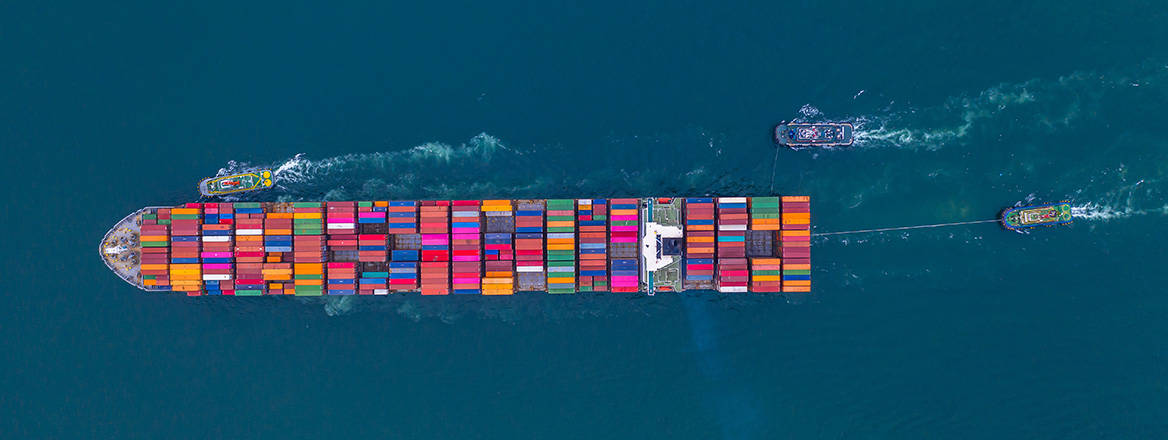The UK and the CPTPP: From Asian Option to Asian Asset
Joining the CPTPP provides the UK with not just economic benefits, but the means to help define and defend a rules-based order in the face of China’s diplomatic and economic heft.
The UK's accession to the Comprehensive and Progressive Agreement for Trans-Pacific Partnership (CPTPP) marks an important success for the ‘tilt to the Indo-Pacific’ articulated in the March 2021 Integrated Review. When the UK lodged its application two years ago, it was ‘creating an Asian option for the future’. Now the UK has converted this option into an asset with tangible benefits – more geopolitical than economic – and created further options for the future.
The CPTPP
The UK joins 11 other members – Australia, Brunei, Canada, Chile, Japan, Malaysia, Mexico, New Zealand, Peru, Singapore and Vietnam – in an agreement that emerged after the US decision to withdraw from the Trans-Pacific Partnership (TPP) that it had itself proposed. With UK membership, the CPTPP is a trade bloc that accounts for 15% and rising of the world economy – approaching the slower-growth EU in its scale. Yet the CPTPP accounts for just under 7% of UK trade, compared with the EU share of over 40%. Geography, history and industrial structure mean that membership will not substantially change this.
Indeed, the UK government's own implausibly precise calculations estimate the direct economic benefits at a mere 0.08% of GDP over 15 years. The UK already has trade agreements with all but Malaysia and Brunei, and there is a good agreement with Japan – by far the largest economy and trading partner in the group. Even if the benefits are 10 times greater than modelled, they would not reach a percentage point of GDP. This is, though, still about benefits and not drawbacks, as concerns on standards appear to have been addressed.
The Only Way is Up
And the benefits are likely to be bigger than modelled. At times of structural change, economic models struggle to estimate the full benefits of market adaptation. The CPTPP economies are set to grow rapidly. Other countries are keen to join, with formal applications lodged by China, Taiwan, Costa Rica, Ecuador and Uruguay and expressions of interest from Thailand, the Philippines and South Korea. At a time when many UK companies want to diversify supply chains away from China, improved trade terms – especially on rules of origin – provide new options and flexibility for sourcing.
Geopolitics Over Economics
It is, however, in the geopolitics rather than the economics that the greater benefits lie. At a time of tense US–China relations, the UK has joined a trade agreement in which neither are present – and which the middle powers of the Asia-Pacific rather than the US or China have shaped.
The CPTPP adds a formal economic structure to the multiple multilateral security engagements that the UK has in the region
The March 2023 Integrated Review Refresh describes the Indo-Pacific as ‘critical to the UK’s economy, security and our interest in an open and stable international order. Developments there will have disproportionate influence on the global economy, supply chains, strategic stability and norms of state behaviour’. While security questions are now more prominent, Asian prosperity has long been built on economic engagement and trade liberalisation. CPTPP membership gives substance to the Integrated Review’s ambition to ‘support the vision for a free and open Indo-Pacific shared by many regional partners’. It provides a structure where the UK plays a role in defining and defending ‘free and open’ and in maintaining a rules-based order in the face of China’s diplomatic and economic heft. By definition, it adds a formal economic structure to the multiple multilateral security engagements that the UK has in the region: CPTPP members now include four of the Five Eyes countries, two AUKUS members, and all of those in the Five Power Defence Arrangements.
The Next Two in the Queue
For the next two in the queue to join CPTPP – China and Taiwan – geopolitics again trump economics. China lodged its application on 16 September 2021, the day after the AUKUS security partnership was announced. Six days later, Taiwan made its own application, having previously declared its intention to join ahead of China’s own declaration. Recognised as a separate customs territory, Taiwan is a member of the World Trade Organization (WTO) under the name Chinese Taipei. China, however, strongly opposes even consideration of CPTPP membership for Taiwan.
China’s accession to the CPTPP seems a distant prospect in current circumstances. Former Prime Minister Liz Truss has already argued that the UK should block China’s application. For China to be admitted, it would need to commit to liberalisation in line with CPTPP requirements. At its simplest, this means a reduced role for the party-state, at a time when that role is increasing. Alternatively, China would need to persuade members to tailor terms to China. The UK has set a precedent by joining on the already-agreed terms rather than seeking significant exceptions.
China’s commitment alone would not be enough. Although Chinese leaders declare their willingness to meet CPTPP conditions, many countries remain sceptical, citing China’s behaviour as a WTO member. They wonder how quickly and fully China would implement reform commitments. China’s use of trade as a tool of coercive diplomacy has raised concerns further, especially in Australia and Japan.
Nonetheless, China is the CPTPP’s largest trading partner, so the discussion is a difficult one for members – all the more so given China’s use of threats. The UK's accession brings a new member-state that is more willing to speak up and resist making accommodations for China, but which also wants to find ways to engage. The UK gets a seat at the table and provides diplomatic cover for some other members.
What happens with Taiwan’s application is more uncertain. Here, too, geopolitics loom larger than economics. In the face of China’s stated opposition, gaining universal agreement to Taiwan’s accession seems unlikely, even as China’s own application makes little headway. While some would support membership to strengthen Taiwan’s economic integration, this very objective would make support more controversial for others.
Building Out from the Pacific?
Beyond an expanding membership, the CPTPP offers further potential. Global trade negotiations are stalled, and WTO reform is making little progress. It is in Asia that trade agreements are being struck. And the CPTPP defines closer, more open trading relations than the region’s other major agreement, the Regional Comprehensive Economic Partnership, of which China is a member. The CPTPP offers the scope for further accords on digital trade, services and standards.
The UK's accession brings a new member-state that is more willing to speak up and resist making accommodations for China, but which also wants to find ways to engage
Moreover, the ‘transpacific’ in CPTPP shows signs of being as flexible as the ‘transatlantic’ in NATO: Uruguay does not border the Pacific, but has applied to join. This, together with UK membership, sets a precedent for many other interested countries to apply.
The EU has ambitions to be a regulatory superpower projecting beyond its own borders, building on GDPR and early initiatives on AI governance. Yet on trade matters, its focus remains on bilateral agreements. Might the EU at some stage consider joining the CPTPP or concluding a mutual recognition agreement?
The prospects for the Indo-Pacific Economic Framework (IPEF) advanced by the US remain uncertain. US domestic politics currently precludes participation in new trade deals, and IPEF is less attractive as a result. While there remains appetite across the Indo-Pacific for US engagement, each country’s leadership has limited time and attention. As the CPTPP develops in scale and scope, it becomes a more attractive forum for reaching agreement on many issues that IPEF also seeks to address. As momentum gathers, the prospects for a future, additional trade agreement initiated by the US appear ever more remote. If the US were to return to trade deals, the CPTPP might then be the vehicle.
From ‘Tilt’ to ‘Long-Term Strategic Footing’
For critics who question the importance of Indo-Pacific engagement, the Integrated Review Refresh is clear that ‘the UK’s overriding priority remains the Euro-Atlantic’. Indeed, the EU and the US remain the more important trading partners for the UK. Yet the Refresh also notes that ‘the prosperity and security of the Euro-Atlantic and Indo-Pacific are inextricably linked’. As economic globalisation evolves – subject to greater security considerations as countries ‘de-risk’, ‘decouple’ and ‘friendshore’ – CPTPP membership will assume greater value for the UK.
The Refresh declares that ‘the UK has delivered the ambition we set for the Indo-Pacific tilt’ with ‘largely non-military instruments’, and that ‘we will put our approach to the Indo-Pacific on a long-term strategic footing, making the region a permanent pillar of the UK’s international policy’. The CPTPP is one key element here, alongside dialogue partner status with the Association of Southeast Asian Nations, the Partners in the Blue Pacific initiative and other actions. Membership provides the UK both with economic benefits and the basis to help protect and advance rules-based, open trade in the world’s fastest-growing region, a region that is also home to China.
The views expressed in this Commentary are the author’s, and do not represent those of RUSI or any other institution.
Have an idea for a Commentary you’d like to write for us? Send a short pitch to commentaries@rusi.org and we’ll get back to you if it fits into our research interests. Full guidelines for contributors can be found here.
WRITTEN BY
Andrew Cainey
RUSI Senior Associate Fellow, International Security
- Jim McLeanMedia Relations Manager+44 (0)7917 373 069JimMc@rusi.org


